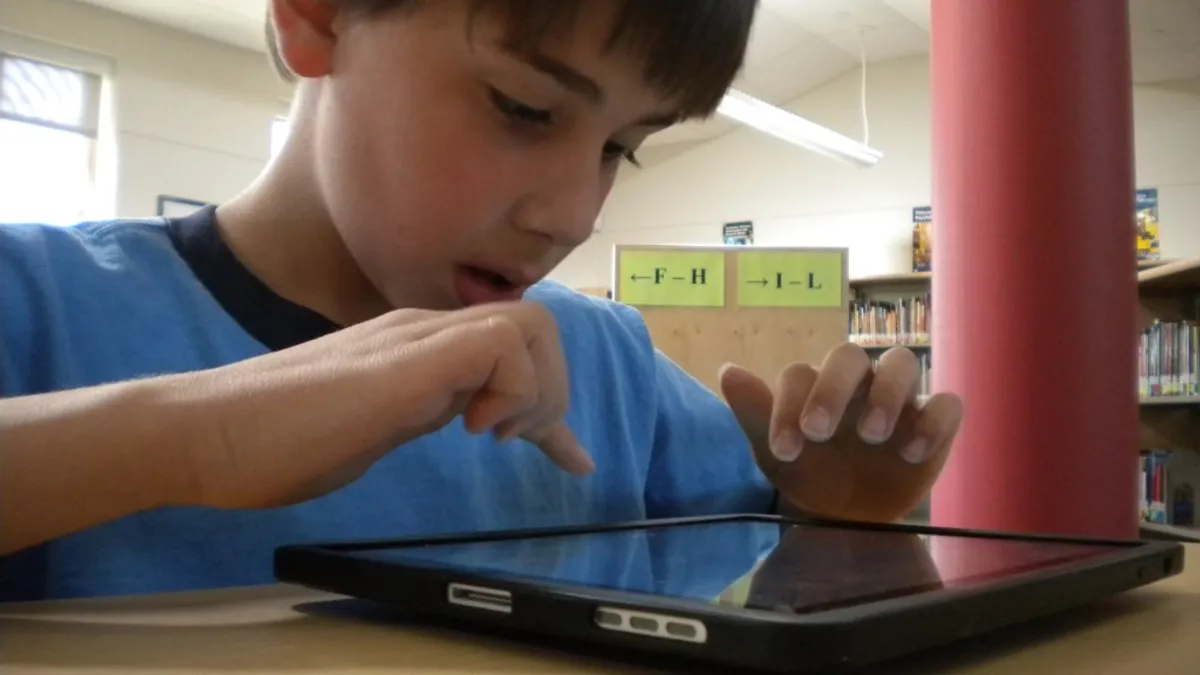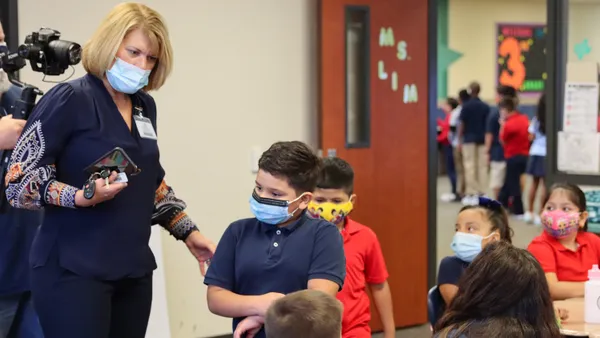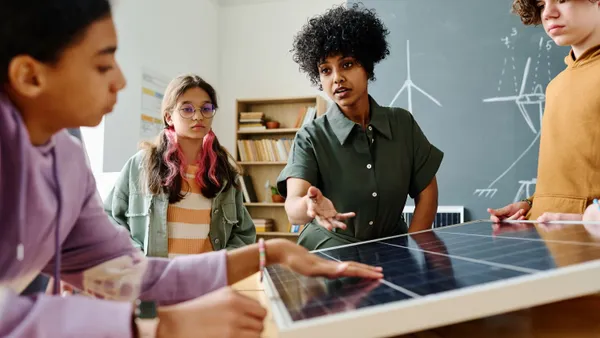This school year, some students will be toting something new to class: an iPad.
Apple is making the iPad the flagship of its push in education and enhancing the next version of its mobile operating system to attract educators. (While a specific release date has not been set, Apple says iOS7 will reach consumers in the fall; most observers expect it to arrive this month.) The new version will bring many education-specific features, including license management for apps and better ways to control multiple devices.
From a large-scale district-wide effort to smaller pilot programs with hints of bigger things to come, here is a look at five programs putting iPads in students' hands this fall:
1. LOS ANGELES UNIFIED SCHOOL DISTRICT (650,000 students; Los Angeles)
A $1 billion effort in Los Angeles aims to put Apple tablets in the hands of every child in the district — 650,000 in all over the next year. That price tag includes the iPads and the costs of installing a wireless network on every campus, something some sites had been lacking. The iPads are meant to put a district of mostly low-income, minority students on even footing with more prosperous students. The technology is being funded by bond sales, which has raised some eyebrows because the bonds are to be paid off over 25 years, while the tablets have a lifespan significantly shorter than that.
2. MOTHER OF PROVIDENCE REGIONAL CATHOLIC SCHOOL (200 students; Wallingford, Penn.)
This new school in the Archdiocese of Philadelphia will be giving an iPad to every first- to eighth-grade student. The school is distributing 200 iPads, and students will hand in the devices at the end of the year. Administrators are touting the iPads as a way to help students who don't have a computer at home, to develop different teaching techniques and to prepare students for life in a digital society. The tablets, apps and cases were purchased with a mix of government and church funding.
3. DOWNERS GROVE DISTRICT 58 (1,500 students; Downers Grove, Ill.)
This suburban Chicago school district plans to give all students iPad minis over the next three years. This fall, about 1,500 students from kindergarten through sixth grade will kick off the $450,000 program. Students — except for kindergartners — will be able to bring the devices home. Last year, teachers had their own iPad students could use.
4. NEIL ARMSTRONG MIDDLE SCHOOL (850 students; Forest Grove, Ore.)
This school is handing out 850 iPads to its seventh- and eighth-grade students in a two-year pilot program. The program has a budget of $300,000, with parents expected to pay $50 for each student's iPad. (That cost is offset by some items being cut from the supply list.) The school aims for students to complete assignments on their devices. Teachers also envision posting presentations, reading material and homework. Another plus for teachers: They can track when students finish their work.
5. NEW TRIER HIGH SCHOOL (2,300 students; Winnetka, Ill.)
The biggest difference between the other programs on this list and this program in a wealthy Chicago suburb: Parents are on the hook for a big chunk of the cost of the iPads, although the district does provide some assistance. The iPad, apps and accessories cost about $620, but a district subsidy cuts that price to about $350 and financial aid is available, officials say. The district plans to require all students to have iPads by the beginning of next school year; this year 2,300 students will have them. Last year, 700 students had the tablets. The iPads are being used to replace textbooks, to create and view videos, and to organize academic and extracurricular activities.
Would you like to see more education news like this in your inbox on a daily basis? Subscribe to our Education Dive email newsletter! You may also want to read Education Dive's look at 7 social networks and resources for improving your curriculum..






 Dive Awards
Dive Awards








